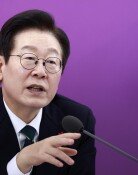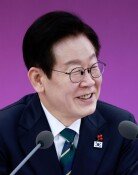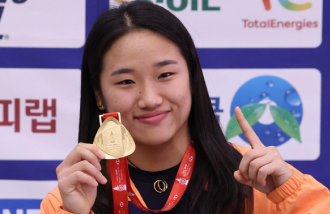Prospects for 10 tril. won arms purchase project (2)
Prospects for 10 tril. won arms purchase project (2)
Posted April. 10, 2001 18:01,
During a meeting with the South Korean foreign minister on Feb. 7, U.S. Secretary of State Colin Powell said he wished for the Seoul government to give favorable consideration to Boeing`s F15 fighter planes. The remarks were received here as an attempt at pressuring the Korean government on the eve of undertaking its next-generation fighter (FX) program.
Earlier on Jan. 29, Boeing`s senior vice president and director in charge of military aircraft and missiles, Jerry Daniels, visited Kyeryongdae, headquarters of the Korean army, navy and air force, and met with the chiefs of staff of the three military services separately. It seemed to signify the importance the United States attaches to Seoul`s X project package, including the FX program. In some quarters, experts speculate that American manufacturers are certain to win the arms contracts. Concerns have been expressed over the relevance of such a foregone conclusion on the massive X project, costing as much as 10 trillion won.
Both government and military leaders in Washington have openly advocated the merits of buying U.S. weapons for the sake of the strategic alliance and operational complementarity. Some say that the FX program of the air force and the army`s AHX program for large assault helicopters have already been awarded to Boeing in favor of the F15K and AH64D. The surface competition is little more than a formality, according to them.
It is true that most of the American products boast excellent quality, even apart from the strategic partnership and operational complementarity of the two allies. On the downside, high quality means higher costs and suppliers are usually reluctant to sell cutting-edge items and transfer related technology.
As long as South Korea depends largely upon the United States for its national security, the Seoul government is hardly in a position to seek its own exclusive interests strictly on the basis of merit. Politics aside, South Korea is very weak in its capacity to gather military intelligence on North Korea, with over 90 percent of it provided by the United States. The possible damage Seoul could suffer in terms of the loss of intelligence on North Korea would amount to billions of dollars. This is a critical handicap South Korea would have to face in the event Washington ceased providing this essential military intelligence.
This, however, does not fully justify the special and wholesale favors the Seoul government may give U.S. weapons manufacturers now that the competition is heating up between American weapons makers and their foreign rivals. Moreover, the quality of some American aircraft models is still being questioned. Such favoritism is certain to give rise to wild arguments. Rumormongers in the political community have it that the Kim Dae-Jung administration is bargaining for Washington`s support of its ``sunshine policy`` toward North Korea with a promise to buy American arms.
Competing against Boeing`s F15K for the FX program are the Rafale fighter made by Dassault of France, the EF Typhoon model produced by a consortium of four European nations and the SU37 manufactured by a Russian company. The bone of contention is which we should opt for -- a test-proven old model (F15K) or new models which are yet to be used and whose quality has yet to be proven.
The three rivals to Boeing insist that South Korea could be the last country to extend the life of Boeing`s production line for the F15, which is soon to be shut down. The model is an outdated one, about to be replaced by F22 Raptor, a next-generation fighter now under development. Boeing counters by arguing that the F15K model is an upgraded version of the F15E, which is of the best quality of all existing fighter planes.
The fighters promoted by the three manufacturers other than Boeing claim that they represent fourth generation models, designed on the basis of a new concept in aerodynamics, presenting generous terms of technology transfer as their selling point. But their quality has not been tested and proven in combat situations, and their interchangeability with the predominantly American weapons systems used Korea is in doubt. These pose grave drawbacks.
Also at issue is the proposed introduction of new assault choppers that may not suit the local terrain. Army leaders contend that the AH1S assault helicopters would be mothballed within ten years and a new model would be required to deal with numerically stronger tanks of North Korea and its possible naval provocations.
The expensive new Boeing model AH64 costs nearly as much as the F16 fighter and the terrain of the Korean peninsula highly limits its maneuverability, analysts say. Some opposition politicians are suggesting that political funds are penetrating the country in return for the aircraft purchase program, calling for rethinking of the entire arms project. Thus, sailing will be rough for the nation`s military buildup programs.
Lee Chol-Hi klimt@donga.com







